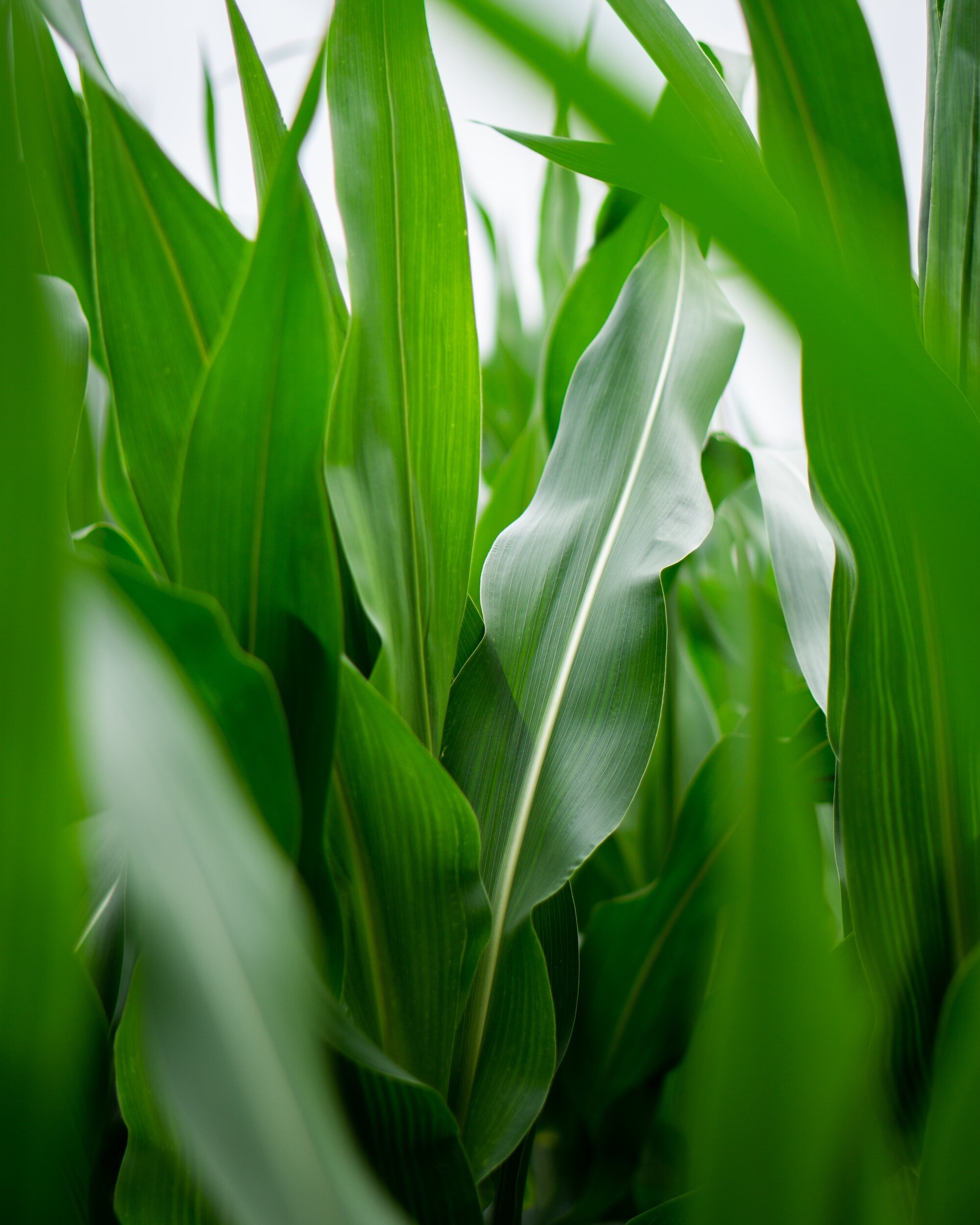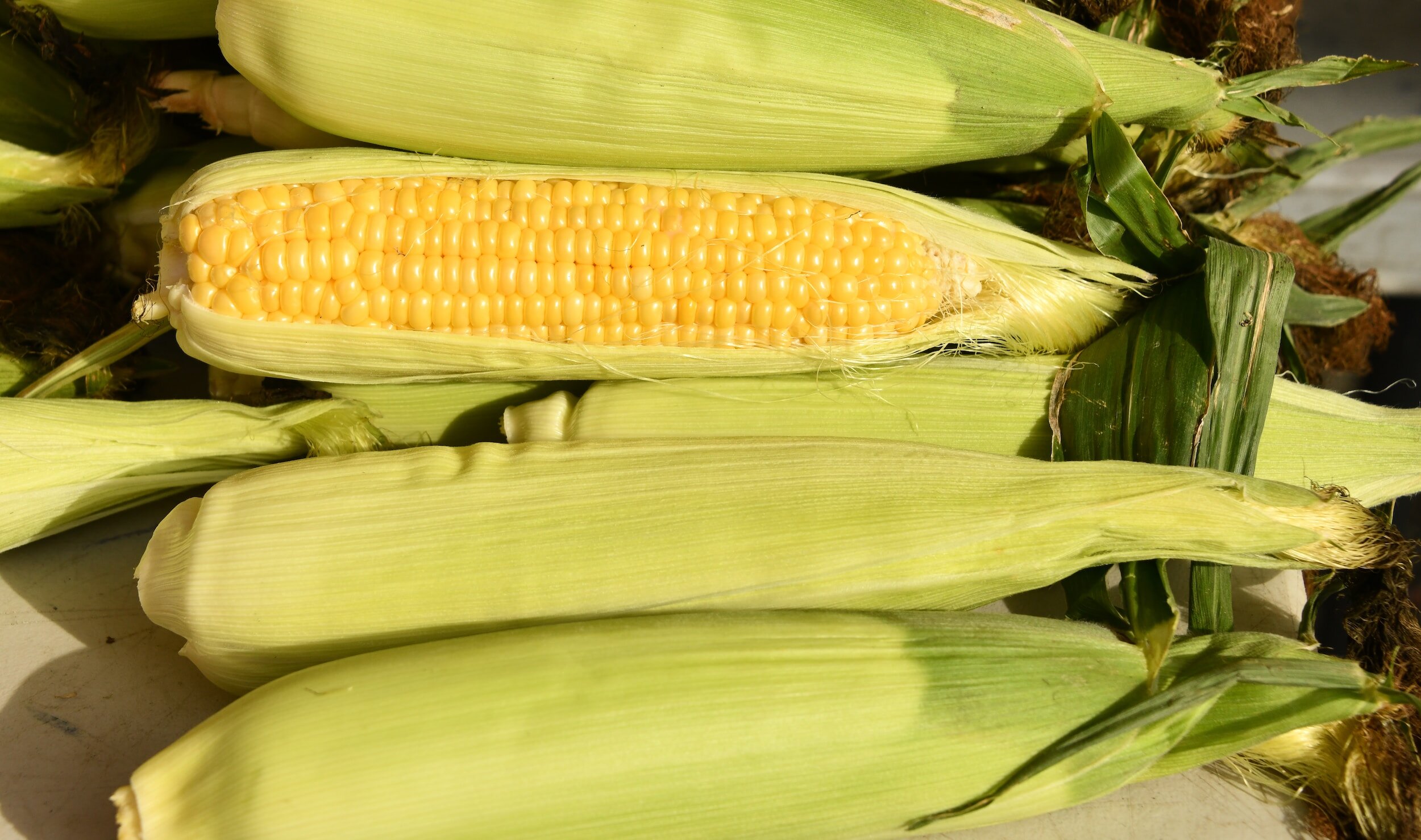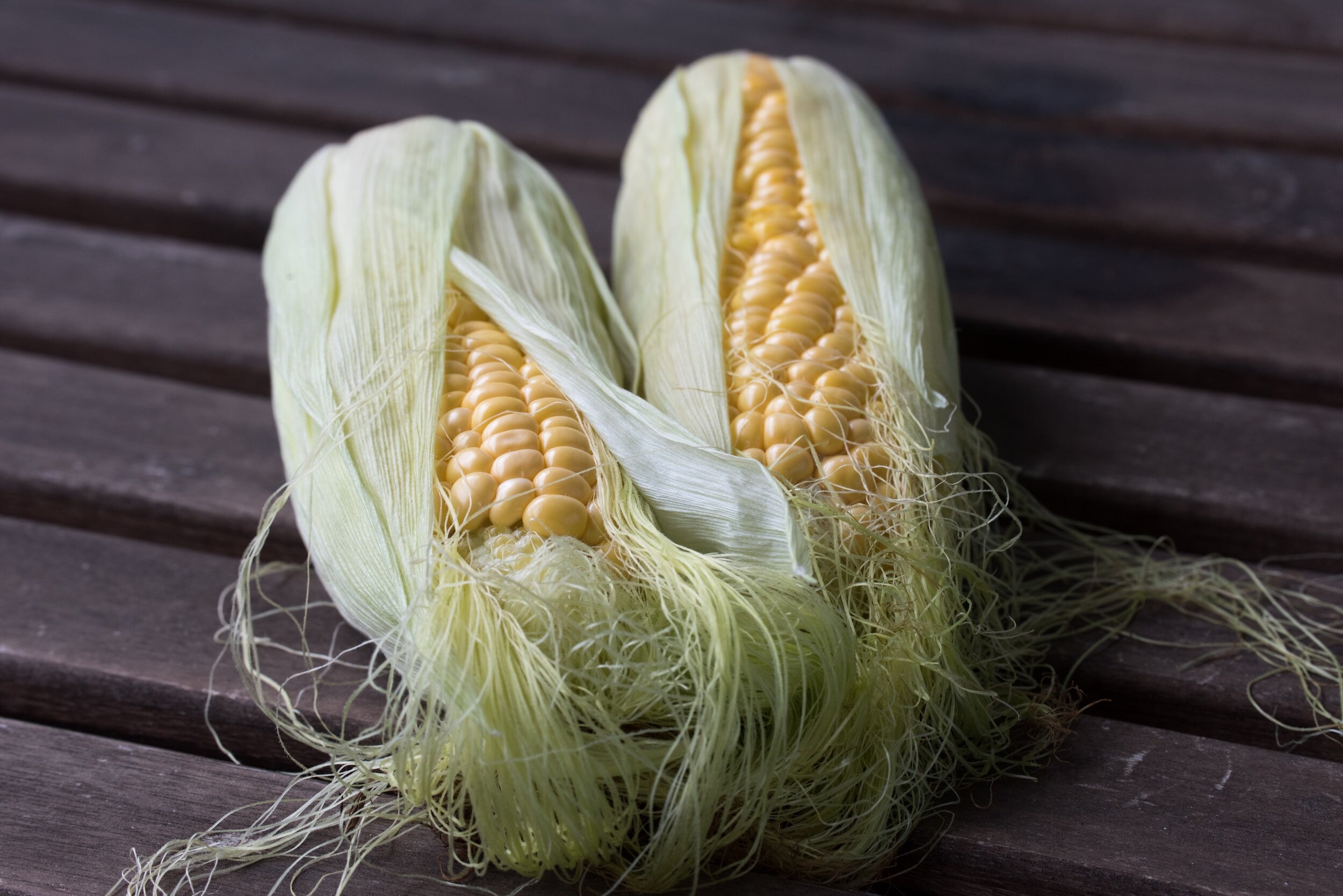Growing Corn in Containers Made Easy
This article has links to products that I may make commission from.
Growing corn in containers is a great way to enjoy fresh, homegrown corn even if you don't have a traditional garden space.
This guide is for gardeners looking to grow corn in small spaces like balconies, terraces, or raised beds.
Whether you want sweet corn for your table, decorative corn for your home, or simply a fulfilling gardening project, this guide will provide essential tips and insights.
Container gardening allows you to cultivate and harvest corn in non-traditional spaces, making it perfect for those without a large garden who still want to experience the joy of growing their own corn.
We’ll explore everything you need to know, from selecting the right containers and corn varieties to the details of planting, caring for your corn plants, and finally, harvesting your crop.
My goal is to give you the knowledge and confidence to turn even the smallest spaces into a thriving corn garden.
Whether you're using pots on a patio, grow bags on a balcony, or a raised bed in a small yard, you’ll find valuable tips and tricks to make your corn-growing experience a success.
To learn more about growing vegetables in containers, check out my guides:
Choosing the Right Containers and Corn Varieties
When starting your container corn-growing journey, selecting the right container and corn variety is really important.
These choices can significantly impact the success and yield of your corn plants.
Corn Container Size and Types
Size Matters:
The size of the container is vital for the healthy growth of corn.
Corn has a deep root system, requiring a container deep enough to accommodate this.
A general rule is to choose containers that are at least 12 inches deep and 24 inches wide.
This size provides adequate space for the roots to grow and supports the plant's overall stability.
Types of Containers:
Various containers can be used for growing corn, including traditional pots, grow bags, and even large buckets.
Each has its advantages. For instance, grow bags are breathable and promote healthy root growth, while plastic pots are more durable and retain moisture better.
The key is to ensure that your container has sufficient drainage to prevent waterlogging, which can harm the corn's roots.
Here are the containers I recommend for growing corn:
Best Corn Varieties for Containers
Dwarf Corn Varieties:
These are ideal for container gardening due to their shorter stalks.
Varieties like 'Dwarf Simon' or 'Dwarf Early Sunglow' are perfect for small spaces, as they grow to a manageable size without sacrificing the quality of the corn.
Here are the 'Early Sunglow’ seeds I recommend:
Sweet Corn:
Sweet corn is a popular choice for its sugary, tender kernels.
Varieties like 'Sweetness' or 'Honey and Cream' are well-suited for containers.
They are not only delicious but also adaptable to the restricted space of a container.
Here are the ‘Sweetness’ corn seeds I recommend:
Dent Corn:
While not as common for container gardening, dent corn like 'Golden Bantam' can be grown in larger containers.
It's a good choice if you're looking to make cornmeal or feed wildlife.
Here are the ‘Bantam’ seeds I recommend:
Planting and Spacing
Planting:
When planting corn seeds, it's important to sow them about 1 to 2 inches deep in the soil.
Planting them too shallow or too deep can affect germination and growth.
Spacing:
In containers, corn plants need enough space to grow without competing for nutrients and sunlight.
Planting corn seeds or seedlings about 8 to 12 inches apart is ideal.
This spacing allows adequate air circulation and sunlight penetration, essential for healthy growth.
Additional Considerations
Companion Planting:
In larger containers, consider companion planting.
Plants like beans and squash can grow well with corn, creating a symbiotic environment that benefits all the plants involved.
Container Mobility:
If possible, use containers with casters or create a mobile base.
This allows you to move the corn to take advantage of the best sunlight throughout the day and to protect the plants from harsh weather conditions.
Want to learn more about container gardening? Check out my guides:
Preparing for Planting
Laying the groundwork correctly is essential for the success of your container corn garden.
From selecting the best potting mix to the intricacies of planting corn seeds, here's how you can prepare for the growing season.
Selecting and Preparing Your Potting Mix
Choosing the Right Mix:
Corn thrives in well-draining, nutrient-rich soil.
For container gardening, it's best to use a high-quality potting mix rather than garden soil.
To learn more about this, check out my guide Garden Soil vs. Potting Soil: How to Choose the Right One.
A mix of vermiculite, or perlite, and compost works well.
This combination ensures good drainage and aeration while retaining enough moisture and nutrients.
Here is the potting mix I recommend using:
Enhancing Soil Nutrition:
Corn is a heavy feeder, so enriching your potting mix with compost or a balanced, slow-release fertilizer can provide the necessary nutrients for growth.
You can also add aged manure or worm castings to increase the soil's fertility.
Here is the slow-release fertilizer I recommend:
pH Levels:
Corn prefers slightly acidic to neutral soil, with a pH between 6.0 and 7.0.
You can easily test the soil pH with a home testing kit and adjust it if necessary using lime (to increase pH) or sulfur (to decrease pH).
Here is the pH tester I recommend:
Planting Corn Seeds
Pre-germination:
For a faster start, you can pre-germinate corn seeds by soaking them in water for 24 hours before planting.
This step is optional but can help speed up germination, especially in cooler climates.
Planting Depth and Method:
Plant corn seeds about 1 to 2 inches deep.
Make small holes in the soil with your finger or a tool, place the seeds, and then cover them lightly with soil.
Water gently but thoroughly after planting to settle the soil around the seeds.
Container Preparation:
Ensure your container has adequate drainage holes.
If not, drill some in the bottom.
To prevent soil loss through these holes, place a layer of gravel or broken pottery at the bottom of the container before adding your potting mix.
Starting Indoors:
In cooler climates, you might want to start your corn seeds indoors and then transplant them outside once the weather warms up.
Use seedling trays or small pots for starting seeds indoors, and make sure they get plenty of light.
Watering and Sunlight Considerations
Initial Watering:
After planting, keep the soil consistently moist but not waterlogged.
Corn seeds need moisture to germinate effectively.
For more watering tips, check out my guide How Often to Water Seedlings.
Sunlight:
Place your containers in a location where they will receive full sun – at least 6-8 hours of direct sunlight per day.
Corn needs plenty of sunlight to grow strong and healthy.
They are ideal for a south-facing garden.
Caring for Your Corn Plants
Proper care is essential for the health of your corn plants.
From ensuring the right amount of sunlight and water to addressing fertilization and pest control, here's how to provide the best care for your container-grown corn.
Sunlight and Watering Needs
Sunlight Requirements:
Corn needs full sun to produce well.
Position your containers in a spot where they receive at least 6 to 8 hours of direct sunlight daily.
If you're growing corn indoors, use grow lights to supplement natural light.
Here are the grow lights I recommend:
Watering Practices:
Corn plants in containers require more frequent watering than those in the ground, as soil in containers can dry out quickly.
Water your corn when the top inch of soil feels dry.
It's crucial to water deeply so that moisture reaches the roots.
Avoid overwatering, as stagnant water can lead to root rot.
For more watering tips, check out my guide How to Use Watering Globes.
Mulching:
To help retain soil moisture and regulate temperature, consider adding a layer of organic mulch around your corn plants.
Straw, grass clippings, or shredded bark are excellent choices.
Check out my guide: The Best Alternatives to Traditional Mulch for Your Garden.
Fertilizing and Maintaining Soil Health
Fertilization Schedule:
Corn is a heavy feeder, especially during its growth spurt.
Feed your corn plants with a balanced, water-soluble fertilizer every 2-4 weeks during the growing season.
Here is the fertilizer I recommend:
Soil Testing:
Periodically testing the soil can help you understand its nutrient content and pH level, allowing you to adjust your fertilization strategy as needed.
Pest and Disease Management
Monitoring for Pests:
Regularly inspect your corn plants for signs of pests like corn earworms, aphids, and spider mites. Early detection is key to effective control.
Natural Pest Control:
Use organic methods like neem oil, insecticidal soaps, or introducing beneficial insects (like ladybugs) to manage pest infestations.
Here is the insecticidal soap I recommend for keeping bugs at bay:
Disease Prevention:
Ensure good air circulation around your plants and avoid overhead watering to reduce the risk of fungal diseases.
Remove and dispose of any diseased plant parts promptly.
Support and Staking
Providing Support:
As corn plants grow tall, they may need support to prevent them from toppling over, especially in windy conditions.
Use stakes or cages to provide stability.
Here are the stakes I recommend using:
Overcoming Challenges in Container Corn Gardening
Container corn gardening, while rewarding, can present some unique challenges.
Understanding and addressing these issues promptly can ensure the health and productivity of your corn plants.
Here’s how to tackle some common difficulties:
Ensuring Adequate Pollination
Pollination Challenges:
Corn relies on wind for pollination, which can be less effective in a container setting, especially if plants are isolated or indoors.
Solutions:
Increase pollination chances by planting corn in blocks rather than rows to facilitate pollen transfer.
For indoor or isolated plants, hand-pollination can be a practical solution.
Gently shake the tassels to release pollen or use a brush to transfer pollen from tassels to silks.
Managing Limited Space
Space Constraints:
One of the main challenges of container gardening is the limited space, which can restrict root growth and nutrient availability.
Solutions:
Choose dwarf or short-stature corn varieties that are more suited to container life.
Utilize vertical space by placing containers on shelves or using stacking planters.
Regularly monitor and manage soil nutrients since container soil can become depleted more quickly than ground soil.
Dealing with Pests and Diseases
Pest and Disease Issues:
Containers can sometimes heighten the risk of pests and diseases due to closer plant proximity and limited airflow.
Solutions:
Practice good hygiene by keeping the area around your containers clean and free of debris.
Use organic pest control methods and ensure adequate spacing between plants to improve air circulation.
Rotate crops each year if possible to prevent disease buildup.
Watering and Nutrient Management
Watering Woes:
Containers dry out faster than in-ground soil, which can lead to under-watering.
Conversely, over-watering can cause root rot and other issues.
Solutions:
Implement a consistent watering schedule, checking soil moisture regularly.
Consider using self-watering containers or drip irrigation systems for more consistent moisture levels.
Regularly fertilize your plants, as container soil loses nutrients faster than garden soil.
Adapting to Weather Conditions
Weather Sensitivity:
Container plants are more vulnerable to extreme temperatures, both hot and cold, as containers can heat up or cool down quickly.
Solutions:
Move containers to shaded areas during extreme heat or use protective covers.
In colder temperatures, bring containers indoors if possible or use insulating materials to protect the plants.
Dealing with Soil Compaction
Soil Compaction Issue:
Over time, soil in containers can become compacted, which hinders root growth and water penetration.
Solutions:
Use a lightweight potting mix and add perlite or vermiculite to improve soil structure.
Periodically loosen the soil gently with a fork or similar tool to prevent compaction.
Harvesting and Enjoying Your Corn
The culmination of your container corn gardening efforts is the harvest!
Here's how to know when your corn is ready to harvest and some tips on enjoying it.
Knowing When to Harvest Corn
Signs of Maturity:
Corn is ready to harvest when the silks at the end of the ear turn brown and dry, usually about 20 days after the silks first appear.
The kernels should be plump and exude a milky liquid when punctured with a fingernail.
If the liquid is clear, the corn needs more time; if it's pasty, it might be overripe.
Harvesting Technique:
To harvest, grasp the ear firmly and twist it downward and away from the stalk.
Be gentle to avoid damaging the plant, as you may have more ears developing on it.
Storing and Preserving Corn
Short-Term Storage:
Fresh corn tastes best when eaten soon after harvesting.
If you can't eat it right away, refrigerate the ears with husks on and consume them within a few days for the best flavor.
Long-Term Preservation:
For longer storage, blanch the ears in boiling water for a few minutes, then cool them quickly in ice water.
After drying, the kernels can be cut off and frozen in airtight containers or bags.
Why Grow Corn in Containers?
Growing corn in containers might seem unconventional at first, but it offers a range of benefits that make it an appealing choice for many gardeners.
Here's why embracing this method can be both rewarding and practical:
Space Efficiency
One of the most compelling reasons to grow corn in containers is space efficiency.
Not everyone has access to a large backyard or garden plot. Containers allow you to grow corn in limited spaces like balconies, patios, or even rooftops.
This approach makes corn cultivation accessible to urban dwellers and those living in apartments or homes with small yards.
Control Over Growing Conditions
Container gardening provides a level of control over the growing environment that traditional gardening can't match.
You can choose the best soil mix for your corn plants, ensuring they have the nutrients they need to thrive.
Additionally, container-grown corn is less likely to suffer from soil-borne diseases, and you can easily move the containers to optimize sunlight exposure or protect the plants from harsh weather.
Enhanced Flavor and Freshness
There's something incredibly satisfying about eating corn that you've grown yourself.
The flavor and freshness of homegrown corn are often superior to what you might find in a store.
Container-grown corn allows you to harvest and enjoy the produce at its peak, offering a truly farm-to-table experience right from your balcony or patio.
Accessibility and Convenience
For those with mobility issues, container gardening can be a more accessible way to garden.
Containers can be placed at convenient heights, reducing the need for bending or kneeling.
This makes gardening a more inclusive activity, suitable for people of various ages and abilities.
Experimentation and Variety
Finally, growing corn in containers allows for experimentation. You can try different corn varieties, each with its unique flavor and characteristics.
It's an opportunity to learn and discover what works best in your specific environment and what satisfies your taste preferences.
FAQs
Can You Grow Corn in a Pot?
Absolutely!
Corn can thrive in pots as long as they are large enough to accommodate the plant's root system and provide adequate soil, water, and sunlight.
Containers should be at least 12-24 inches deep and wide, with good drainage.
How to Grow Sweet Corn in Containers?
Growing sweet corn in containers follows the same basic principles as other corn types.
Choose a dwarf or container-friendly variety, use a large pot with good drainage, plant the seeds in a quality potting mix, and ensure the plants receive full sun and regular watering.
Sweet corn will need to be monitored closely for proper pollination.
What Is the Best Corn to Grow in Containers?
The best corn varieties for containers are typically dwarf or short-stature varieties that don’t grow as tall as standard corn.
Look for varieties labeled as suitable for container growing or small gardens.
Can You Grow Corn in Containers Indoors?
Yes, it's possible to grow corn indoors, but it requires ample space and light.
You'll need a large container and a location near a sunny window or under grow lights.
Indoor corn will likely need hand pollination, as there won't be wind or insects to naturally pollinate the plants.
Can I Grow Multiple Corn Varieties in One Container?
While possible, it's not recommended to grow multiple corn varieties in one container due to cross-pollination, which can affect the taste and quality of the corn.
If you want to grow different varieties, use separate containers and space them apart.













































